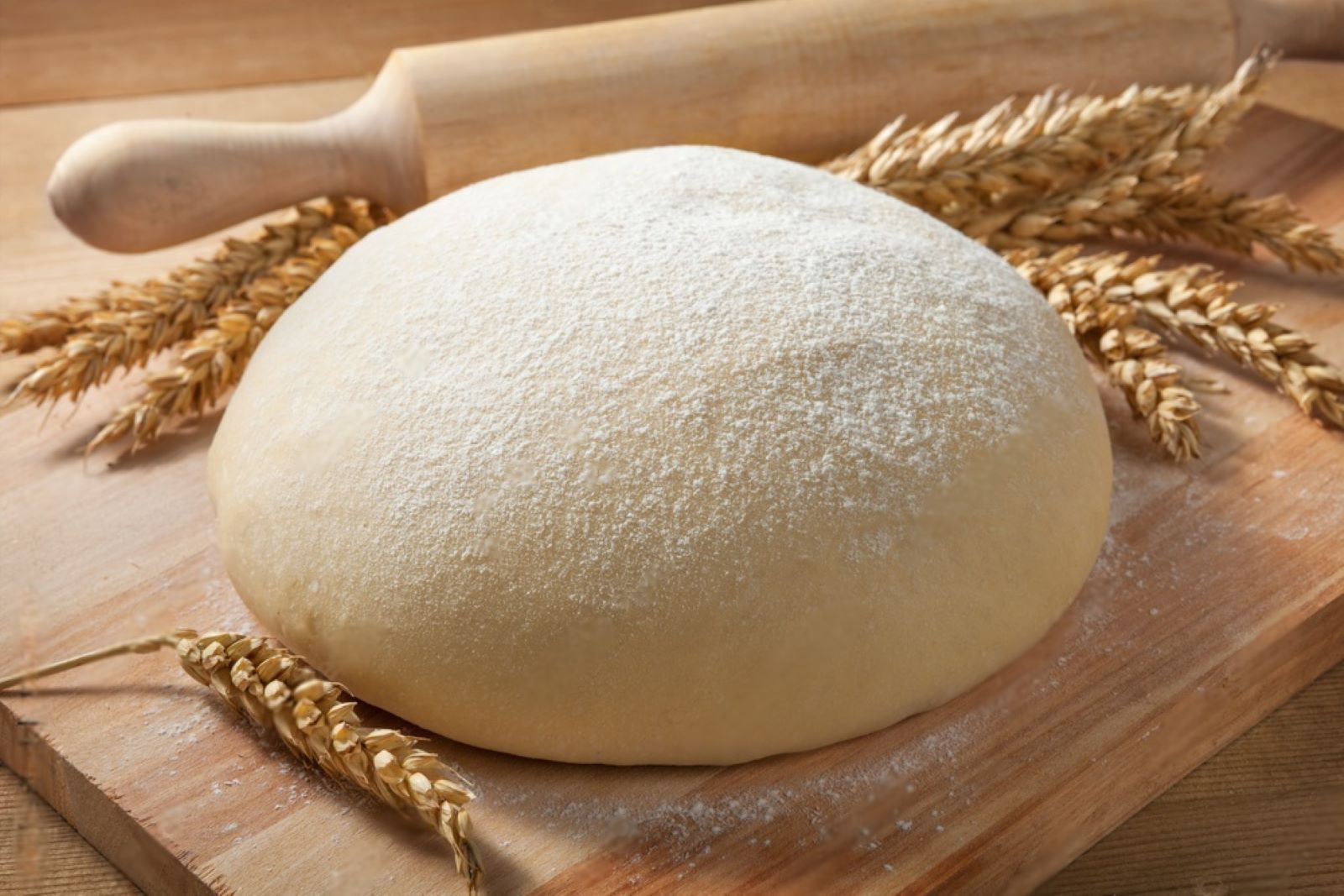
Dough, the foundation of many baked goods and pastries, is a versatile and essential component in the world of baking. Whether it’s for bread, pizza, cookies, or pastries, the quality of the dough plays a crucial role in the final outcome of the baked treat. However, there are times when you may find yourself with excess dough or want to prepare it in advance for future use. Freezing dough is a fantastic option to extend its shelf life and have it readily available whenever you need it. Freezing preserves the freshness and texture of the dough, allowing you to effortlessly bake fresh goods whenever the craving strikes. In this guide, we will explore the best practices for freezing dough, including proper preparation, packaging, and storage techniques, so you can have a stash of dough in your freezer, ready to be thawed and transformed into delicious baked creations. Join us as we delve into the world of freezing dough and unlock the convenience of having homemade dough at your fingertips, ensuring that you can enjoy fresh, homemade baked goods at any time.
Here are the simple steps to freeze dough:
Step 1: Prepare the Dough
The first step in freezing dough is to ensure that it has been properly prepared according to your chosen recipe. Whether you’re making bread dough, pizza dough, or pastry dough, it’s essential to follow the instructions carefully to achieve the desired consistency and texture.
Different types of dough require specific ingredients and techniques. For instance, bread dough typically includes flour, yeast, water, salt, and sometimes additional ingredients like sugar or fat. Pizza dough may have similar ingredients but might require a different ratio or method of mixing. Pastry dough, on the other hand, often involves incorporating cold butter or shortening into the flour to create a flaky texture.
Follow your recipe closely, measuring the ingredients accurately and combining them in the recommended order. Pay attention to mixing times and techniques, such as kneading or folding, as they can greatly affect the dough’s structure and final result.
It’s crucial to achieve the desired consistency before moving on to the freezing process. The dough should be smooth, elastic, and well-incorporated, without any dry or overly sticky patches. Take your time during the preparation stage to ensure the dough is thoroughly mixed and has properly developed gluten if applicable.
Step 2: Shape the Dough
Once you have prepared the dough according to your recipe, the next step is to shape it into the desired form before freezing. The shaping process will depend on the specific type of dough you are working with and the final baked goods you intend to make.
For bread dough, you can shape it into loaves, rolls, or even buns. Divide the dough into portions based on the size of the bread you want to make. Shape each portion into the desired shape, whether it’s a classic loaf shape or individual rolls. Ensure that the dough is evenly shaped and smooth on the surface. This will help the bread rise and bake uniformly when you eventually bake it after thawing.
Pizza dough is typically shaped into individual-sized balls. Divide the dough into portions that are suitable for a single pizza crust. Roll each portion into a smooth ball by tucking the edges underneath, creating surface tension. This shape will make it easier to handle the dough and shape it into a pizza crust after thawing.
For pastry dough, the shaping process might involve creating a disc or a rectangle that can be easily rolled out into the desired thickness when you’re ready to use it for pastries like pies or turnovers.
Shaping the dough before freezing serves several purposes. First, it allows you to portion the dough according to your needs. This way, you can thaw and use only the amount of dough required for a particular recipe, minimizing waste. Second, shaping the dough into the desired form makes it easier to handle when it comes time to thaw and work with it. It eliminates the need to handle sticky or excessively soft dough, which can be challenging to shape accurately.
Step 3: Wrap the Dough
After shaping the dough into the desired form, it’s crucial to wrap it tightly to protect it during freezing. This step is essential for preventing freezer burn and maintaining the dough’s freshness and quality.
To wrap the dough, you have a few options, such as using plastic wrap or aluminum foil. Here’s how to do it:
- Plastic wrap: Tear off a sheet of plastic wrap and place the shaped dough in the center. Pull the edges of the plastic wrap over the dough, covering it completely. Press the plastic wrap firmly against the dough to remove any air pockets. Continue wrapping until the dough is securely sealed in the plastic wrap. Ensure that all sides of the dough are covered, leaving no exposed areas.
- Aluminum foil: If you prefer using aluminum foil, tear off a sheet that is large enough to fully enclose the dough. Place the shaped dough in the center of the foil and fold the edges over it, crimping them tightly to create a sealed package. Again, make sure all sides of the dough are covered, leaving no openings.
The purpose of wrapping the dough tightly is to create a barrier that protects it from freezer burn. Freezer burn occurs when the moisture in the dough evaporates, causing the exposed areas to dry out and develop a frosty texture. It can affect the taste and texture of the baked goods.
Another advantage of tightly wrapping the dough is that it prevents the absorption of unwanted odors from the freezer. This is especially important if you have other strongly flavored foods in your freezer, as the dough can absorb those odors, resulting in off-flavors when baked.
Step 4: Place in a Freezer-Safe Container
After wrapping the dough tightly in plastic wrap or aluminum foil, the next step is to place the wrapped dough portions in freezer-safe containers or resealable plastic bags. This additional layer of protection helps further preserve the quality of the dough and keeps it organized in the freezer.
Here’s how to do it:
- Freezer-safe containers: Choose airtight containers specifically designed for freezer storage. These containers should be made of materials that are resistant to low temperatures and won’t become brittle or crack in the freezer. Glass or plastic containers with secure lids work well for storing dough. Make sure the containers are clean and dry before placing the wrapped dough inside. Place the wrapped dough portions in the containers, leaving some space at the top for expansion during freezing. Seal the containers tightly to create a secure, airtight seal.
- Resealable plastic bags: Alternatively, you can use resealable plastic bags specifically designed for freezer storage. These bags are made of thicker, more durable plastic that helps protect the dough from freezer burn. Place the wrapped dough portions inside the bags, squeezing out as much air as possible before sealing them. Make sure the bags are labeled with the type of dough and the date of freezing for easy identification.
Properly labeling the containers or bags is crucial for easy identification later on. When labeling, include the type of dough (e.g., bread, pizza, pastry) and the date of freezing. This information will help you keep track of how long the dough has been frozen, allowing you to use the oldest dough first and ensuring that it remains within its optimal storage period.
Step 5: Freeze the Dough
Once you have placed the wrapped dough portions in freezer-safe containers or resealable bags, it’s time to freeze them. Freezing the dough properly is essential for maintaining its quality and ensuring it stays fresh for future use.
Here’s how to freeze the dough effectively:
- Placement in the freezer: Put the sealed containers or bags of dough in the freezer. Find a flat surface in your freezer where you can place them in a single layer. This allows for proper air circulation around each portion of dough, which promotes faster and more even freezing. Avoid overcrowding the freezer, as this can impede air circulation and lead to uneven freezing. If necessary, freeze the dough in multiple batches to ensure adequate space.
- Air circulation: Proper air circulation is crucial during the freezing process. It helps maintain consistent temperatures and prevents the formation of ice crystals, which can affect the dough’s texture and quality. By placing the containers or bags in a single layer, you allow air to circulate freely around each portion of dough, promoting optimal freezing.
- Avoid sticking together: Take care to prevent the dough portions from sticking together during freezing. Ensure that there is enough space between them to avoid contact. If using resealable plastic bags, you can lay them flat in the freezer to keep the dough portions separate. This way, when you need to retrieve a specific portion, it will be easier to separate without thawing the entire batch.
It’s important to maintain consistent freezer temperatures throughout the freezing process. Fluctuating temperatures can compromise the quality of the dough. Keep the freezer set at the recommended temperature and avoid frequent opening and closing of the freezer door, as this can cause temperature fluctuations.
How long can dough last in freezer?
The duration for which dough can be stored in the freezer varies depending on the type of dough and how well it’s packaged. In general, bread, pizza, and biscuit dough can be frozen for 1 to 3 months. Cookie dough tends to retain its quality for a similar period. Pastry dough, such as pie crust or puff pastry, can typically be stored for 2 to 3 months. It’s important to ensure airtight, freezer-safe packaging and proper labeling with the type of dough and freezing date. While dough may remain safe to eat beyond these recommended timeframes, extended storage can impact its texture, rise, and flavor, so it’s advisable to use it within the suggested period for optimal results.
Step 6: Thaw the Dough
When you’re ready to use the frozen dough, it’s important to thaw it properly to ensure its texture and quality are preserved. Thawing the dough gradually in the refrigerator is the recommended method, as it allows for even thawing and helps prevent the dough from becoming sticky.
Here’s how to thaw the dough effectively:
- Transfer to the refrigerator: Take the frozen dough from the freezer and transfer it to the refrigerator. Place it on a plate or a tray to catch any condensation that may occur during thawing. Keep the dough in its sealed container or bag while thawing to prevent moisture loss and to protect it from absorbing any odors from other foods in the refrigerator.
- Thawing time: Allow the dough to thaw gradually in the refrigerator. The thawing time will vary depending on the size and type of dough. Generally, smaller portions of dough will thaw more quickly than larger ones. As a general guideline, bread dough and pizza dough may take around 6 to 8 hours to thaw completely, while pastry dough might require around 4 to 6 hours. For convenience, you can thaw the dough overnight, leaving it in the refrigerator until it becomes soft and pliable.
- Preventing stickiness: Thawing the dough slowly in the refrigerator helps prevent it from becoming sticky. This gradual thawing process allows the dough to regain its moisture evenly, preserving its texture. If you thaw the dough at room temperature or using heat sources like microwaves or warm water, it can cause uneven thawing and result in a sticky or gummy texture.
During the thawing process, it’s important to monitor the dough periodically. Check its consistency and texture to ensure it has thawed evenly. If you notice any areas that are still partially frozen, you can gently separate them using your fingers or a rolling pin. Be careful not to apply excessive force, as it can lead to uneven textures in the final baked goods.
By thawing the dough gradually in the refrigerator, you allow it to regain its pliability and prepare it for shaping and baking. Thawed dough should be soft, easy to handle, and ready for the next steps in your baking process.
Step 7: Rest the Dough
After the frozen dough has thawed, it’s beneficial to let it rest at room temperature for a short period before working with it. This resting period allows the gluten in the dough to relax, making it easier to shape and handle. It also contributes to improving the texture and flavor of the final baked goods.
Here’s how to rest the dough effectively:
- Thawing completion: Ensure that the dough has fully thawed before proceeding to the resting step. Gently press your finger into the dough to check its consistency. It should be soft and pliable throughout.
- Room temperature rest: Transfer the thawed dough to a clean, lightly floured surface or a bowl. Let it rest at room temperature for about 15 to 30 minutes. During this time, the dough will gradually warm up, and the gluten strands will relax. Resting the dough allows the gluten to become more extensible, making it easier to shape and work with without resistance or springing back.
- Covered or uncovered: Depending on the type of dough, you can choose to cover it with a clean kitchen towel or plastic wrap while it rests. This covering helps prevent the dough from drying out on the surface. However, if you prefer a slightly drier exterior for certain baked goods, you can leave the dough uncovered during the resting period.
The resting period also provides an opportunity for the flavors in the dough to meld and develop. This contributes to enhancing the overall taste of the final baked goods. The resting time can vary depending on the specific dough recipe and desired results. Generally, a resting period of 15 to 30 minutes is sufficient to achieve noticeable improvements in the dough’s texture and flavor.
Once the dough has rested, it will be more relaxed and easier to shape according to your intended baking method. Whether you’re rolling out pastry dough, shaping bread, or stretching pizza dough, the rest period allows the dough to be more cooperative and results in better-formed baked goods.
By including a brief resting step after thawing the dough, you ensure that the gluten relaxes and the dough becomes more workable, leading to improved texture, easier handling, and enhanced flavor in the final baked goods.
Other related questions
Can you refreeze dough?
No, it is generally not recommended to refreeze dough once it has been thawed. When dough is thawed, the process causes moisture to be released, potentially leading to changes in texture and quality. Refreezing dough can result in further moisture loss and the development of freezer burn, negatively impacting its taste and texture. It is best to thaw and use dough only once to ensure optimal results.
How do I know if the dough has gone bad after being frozen?
To determine if frozen dough has gone bad, look for signs of spoilage such as an off odor, mold growth, or discoloration. Check for any unusual texture changes, such as excessive dryness or stickiness. If the dough exhibits any of these signs, it is advisable to discard it to avoid potential foodborne illnesses and ensure the safety and quality of your baked goods.
Are there any special considerations for freezing yeast-based dough?
Yes, there are some special considerations when freezing yeast-based dough. Firstly, it’s important to let the dough complete its initial rise before freezing. This allows the yeast to fully activate and develop flavor. Once the dough has risen, shape it into the desired form (such as rolls or loaves) and then freeze it promptly. When thawing, allow the dough to thaw and rise at room temperature until it doubles in size before baking. This may take several hours, depending on the temperature and the dough’s initial condition.
Can I freeze dough that has already been proofed?
Yes, you can freeze dough that has already been proofed. However, it’s important to note that freezing proofed dough may affect its texture and rise. To freeze proofed dough, allow it to go through the initial rise process until it has doubled in size. Then, shape the dough as desired and place it in a freezer-safe container or wrap it tightly in plastic wrap.
Can I freeze dough that has been mixed with eggs or dairy products?
Yes, you can freeze dough that has been mixed with eggs or dairy products. However, it’s important to note that the texture and quality of the dough may be slightly affected after freezing and thawing. Eggs and dairy can contribute to moisture in the dough, which may result in some changes in texture. To freeze dough with eggs or dairy, shape it into the desired form, such as rolls or loaves, and then freeze it promptly. When thawing and baking, allow the dough to come to room temperature and rise as necessary.
Can I freeze dough with fillings or toppings?
Yes, you can freeze dough with fillings or toppings, but there are a few considerations to keep in mind. If the filling or topping is likely to become soggy or lose its texture when frozen and thawed, it’s best to add it after the dough has been thawed and shaped. In such cases, freeze the dough without the fillings or toppings, and add them just before baking. However, some fillings and toppings, such as certain types of fruit or cheese, may freeze well without significant texture changes. It’s recommended to experiment and test small batches to determine the best approach for your specific dough and filling/topping combination.








